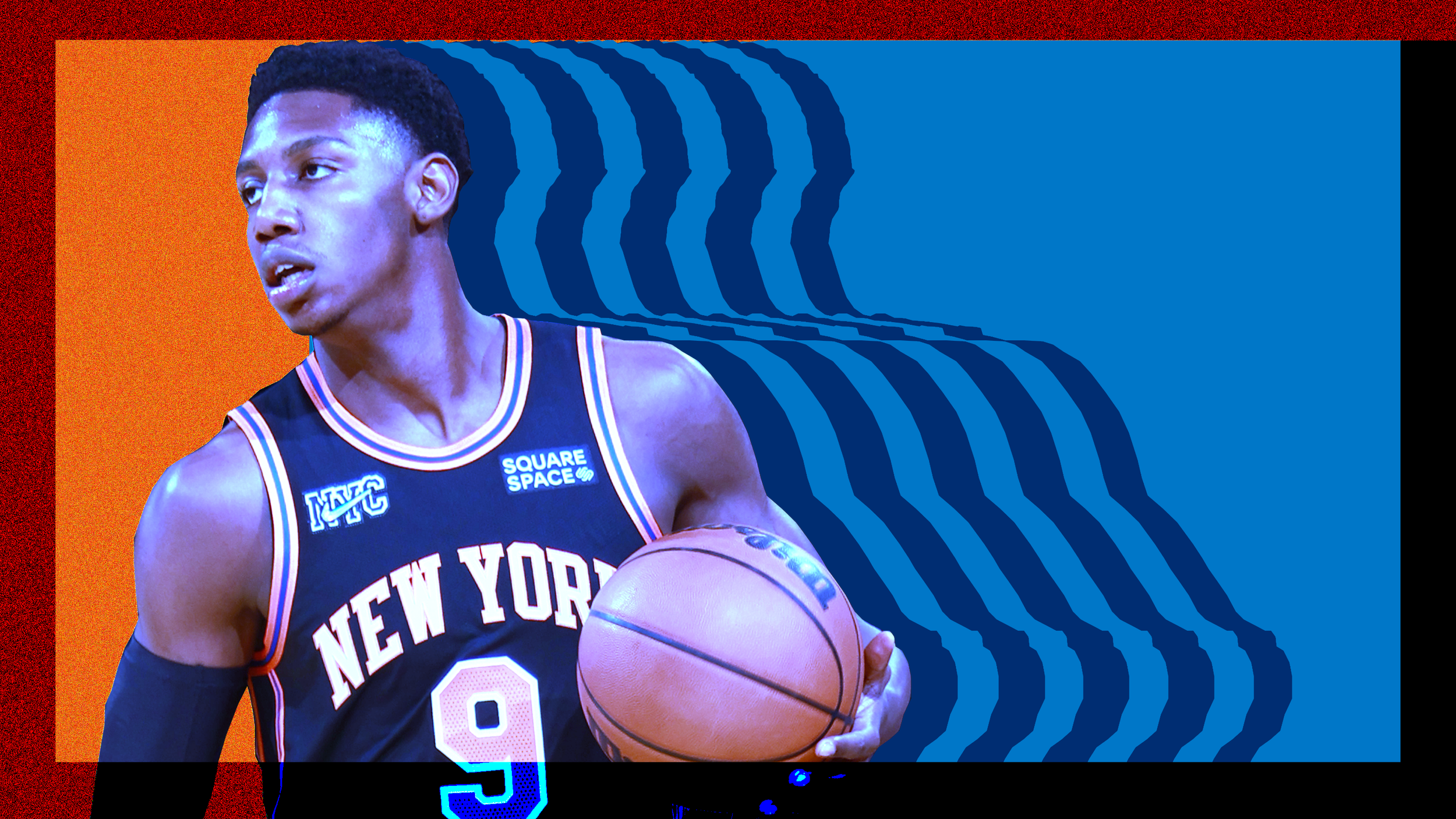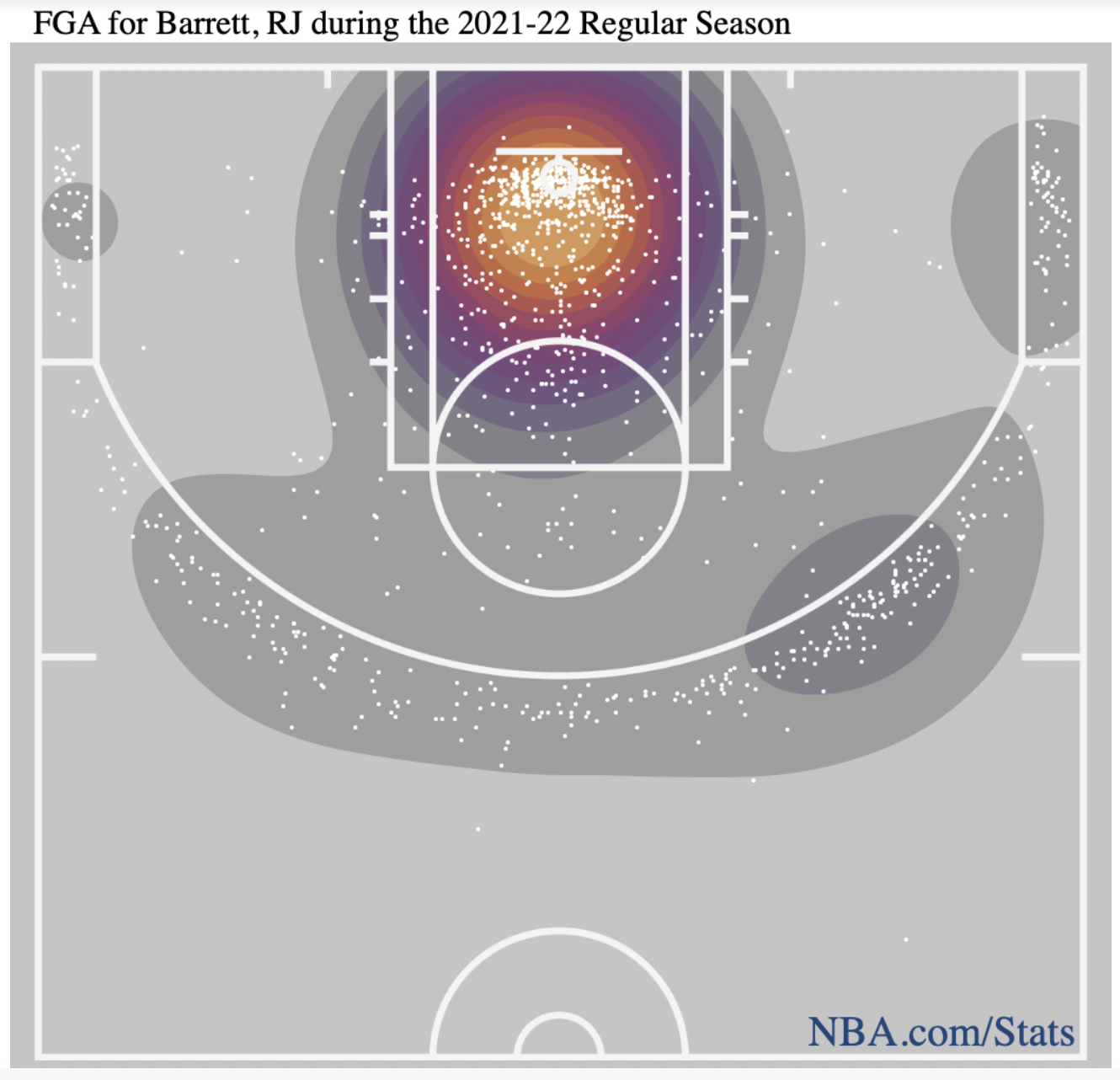RJ Barrett: Three days in January
Small sample sizes are the bane of an NBA evaluator’s existence… but could a three-day stretch in January of last season have shown the blueprint for an RJ Barrett star turn?
Chapter One: The confession
I generally hate to make any basketball writing about myself, but I have a confession to make right off the bat: I have a hard time believing in RJ Barrett. I am simultaneously baffled and inspired by folks who take to social media daily and publicly proclaim that Barrett will be a multi-time All-Star and a fringe All-NBA-level talent. I just don’t see it.
And, truthfully, that bums me out. My favorite team has a 22-year-old switchable wing with a blue-chip pedigree (fresh off averaging 20 points per game, mind you), and I wouldn’t lose a wink of sleep if the Knicks included him in a trade for a star player. Those Barrett true believers are pesky positive people, though. Jehovah’s Witnesses with Bill Clinton charm, and their persistent proselytizing is finally wearing me down.
A Barrett aficionado sent me a meme a few weeks ago — a virtual leaflet creased and shoved in between my door jambs — that showed Barrett’s progression of 30-point games in his career. He’s grown from zero to one to 11 such outings in each of his three years in the NBA.
These Doubting Thomas-type ponderings bounce right off people with true faith: How many shots did he take in those games? Did the Knicks win? Who was guarding him? Did he attempt to make an unusually high number of free throws or threes? How many did Luka or Tatum have in their third season?
There were indeed games that supported my fears. For example, on March 22 against the Atlanta Hawks, Barrett scored 30 points on 9-25 and 11-17 from the line in a loss. Or the month prior, he dropped 46 points with 14 free throws in a 15-point home loss to the Miami Heat.
Something else caught my eye as well, though: a stretch of three consecutive games that put all my questions to rest. He shot it well in all three. Barrett and Julius Randle co-existed. (Randle played in all three and also played well in two of them.) Most importantly, the Knicks convincingly won all three.
If I were to root out and eradicate my Barrett skepticism, the initial ember would be buried somewhere in those three games. Those three days in January would become the sacred tome that made a monk out of me.
Chapter Two: The big picture stats
RJ Barrett played out of his mind on Jan. 10 against San Antonio, Jan. 12 against Dallas, and Jan. 15 at Atlanta. He scored 31, 32, and 26 points, leading the Knicks to 15-, 23-, and 9-point wins, respectively. How he led the Knicks through those games sets this three-game span apart from his other 30-point outings.
From a shooting and scoring perspective, Barrett performed above every average on those three evenings in January. He scored more points per game while shooting better from the field, three, and the free throw line. My inner Doubting Thomas says, “Sure, but he also played more minutes per game those three days than he averaged the rest of the season.” That voice is wrong, though, here. More minutes per game wouldn’t have mattered if he used those minutes to shoot his season average.
These three games in January weren’t just noteworthy because of Barrett’s counting stats. Depending on the metric you use (like NBA Math’s TPA metric, for example), he was the least efficient player on the team last season. So while advanced metrics don’t tend to paint his game positively, this stretch was an exception.
That effective field goal percentage would be one of the best wing numbers in the league if he averaged it for an entire season. Typically, bigs who do a lot of finishing around the rim are the archetypes who score those numbers. The same thing holds for the true shooting percentage. For comparison, Kevin Durant averaged 63.4% this past season. Of course, no one is arguing that Barrett is near Durant’s level as a scoring nexus. Still, even a slight leap in the season-wide averages would prove his true believers right that there could be an elite scorer buried under heaps of potential.
Some of the RJ Hive might also point out that these three days in January aren’t anything out of the ordinary for Barrett once he took more control of the offensive after the calendar turned to 2022. Barrett averaged more shots and higher usage per game, but he still only registered 23.6 points per game on 41/35/72 shooting splits for the rest of the season. Advanced stats also lagged.
Something different was happening in those games, but what was it?
Chapter Three: Stardom is where the shots are
We’ve all hit flow states before – that feeling that we can do no wrong in our work, especially if the task has any kind of artistry to it. Comedians talk about situations where they spend weeks crushing in front of every audience. Musicians go on runs where every note comes directly from their soul. Dock Ellis once threw a no-hitter on LSD. People can have good days at the office. Maybe Barrett was just on a heater, and things slowed down for him (the pace numbers from above would support that idea).
It would also be organizational malpractice for the Knicks to write those games off as a lucky streak and not analyze why Barrett had the performance he did. My gut told me that he must have had a wildly different shot diet during that week in January.
My gut was wrong. (I can hear RJ stans shouting, “YOUR GUT HAS BEEN WRONG ABOUT ALL OF THIS!” at their screens.) I was sure I’d find that his offense took a different shape in these three games than it did for the rest of the season. However, while there was some minor variation, nothing about his game was wildly different those nights. For further proof, look at his season heat map compared to his heat map from Jan. 10 against the Spurs (his best shooting percentage night).
It’s not a direct mapping, but they are clearly graphics of the same player or shot profile: a bit of work in each corner and a ton of traffic moving from the paint to above the break on the right side.
Not all basketball shots are created equally, regardless of location.
Chapter Four: Who’s guarding RJ Barrett, and how?
There is more than one way to skin a cat, and more than one way to become a superstar scorer in the NBA, but grinding film from those three games in January revealed some patterns about Barrett’s path to becoming a more efficient scorer. Two play types jump off the page and screen after watching these games.
The first is pure catch-and-shoot opportunities. On the season, Barrett only shot 34.2% on catch-and-shoot chances, but on these three days in January, he shot 54.5%. This jump in efficiency was due mainly to the fact that he picked his spots more wisely. Catch-and-shoot attempts accounted for just over a quarter of his shot attempts throughout the season. On these nights, though, it was just a hair over 17% of his total field goal attempts.
If you are a proponent of Barrett running the offense, this clip should be Exhibit A for you. He only had such a clean look because he was almost hyperactive during the play. It’s easy to argue that this version of Barrett could be the driving force of an NBA offense.
Conversely, if you believe that Barrett would make a fantastic second option, he showed that, too, across these three games. Because Randle played well, his ability to draw the defense's attention tremendously impacted Barrett’s catch-and-shoot efficiency. Imagine what Barrett could be if either A) Randle played that well always or B) the Knicks had a different top option.
The second play type that stands out is what happened off screens for Barrett in these three games. (For simplicity purposes, I counted any play where Barrett came off a screen as either the ball-handler or off-ball in this jumbo category.) Screens were a fascinating study during these three games for a few reasons.
First, by Barrett’s standards, the team absolutely spammed this play type against the Spurs, Mavericks, and Hawks. All the screen categories only accounted for 28.9% of Barrett’s offense as a season average. During this week, 45.2% of Barrett’s shot attempts came off a screen.
The second was who was guarding him. Barrett struggled against wings on these three nights. He shot 66.7% when covered by a guard, 58.3% when covered by a big, but only 40% when guarded by a wing. However, he shot 50% against wings after a screen. Many people smarter than me have discussed what Barrett can do with his strength against guards or his speed against bigs at length, but Barrett must be able to score against other wings consistently for his efficiency to improve. That’s why it is essential to see what he did in these three games when using screens against other wings.
Barrett plays the drop coverage perfectly here. He keeps Joshua Primo on his hip and makes his way to the paint for an easy floater. If you want his efficiency numbers to improve, he needs more opportunities like this one.
This clip shows that coming off screens didn’t just help him get to the basket — it also helped him get better looks on jumpers. That’s Dorian Finney-Smith on the closeout there. That’s a great wing defender who hampered Barrett looks at other points in the game. Not here, though, because the DHO with Randle bought him the space he needed to get the shot off.
For the RJ Barrett true believer, this clip is an iconographic image. All Barrett needed was the slight help from a Taj Gibson screen to do what he was born to do. Go to his left and finish at the rim against a strong wing defender. If you believe at your core that Barrett can be the star on a championship team, we need to see more of that kind of play.
Chapter Five: Converting… sort of
Did I unearth a newfound belief in RJ Barrett throughout the course of this? Not exactly. However, what is clear is that buried underneath a roster that may not be built for his success, a coach who doesn’t coach up offense, and however you want to describe the situation with Randle, there is more potential than I have given him credit for having.
That also doesn’t mean I’m ready to start going door-to-door trying to create my own Barrett converts. I still think there are serious flaws to his game that worry me. However, if Barrett can do more of what worked in these three games, specifically finding ways to score consistently against high-level defensive wings, then I might start worshiping at the RJ altar. As for now, you can find me in a pew on the high holidays, which is more than I could have said previously.







